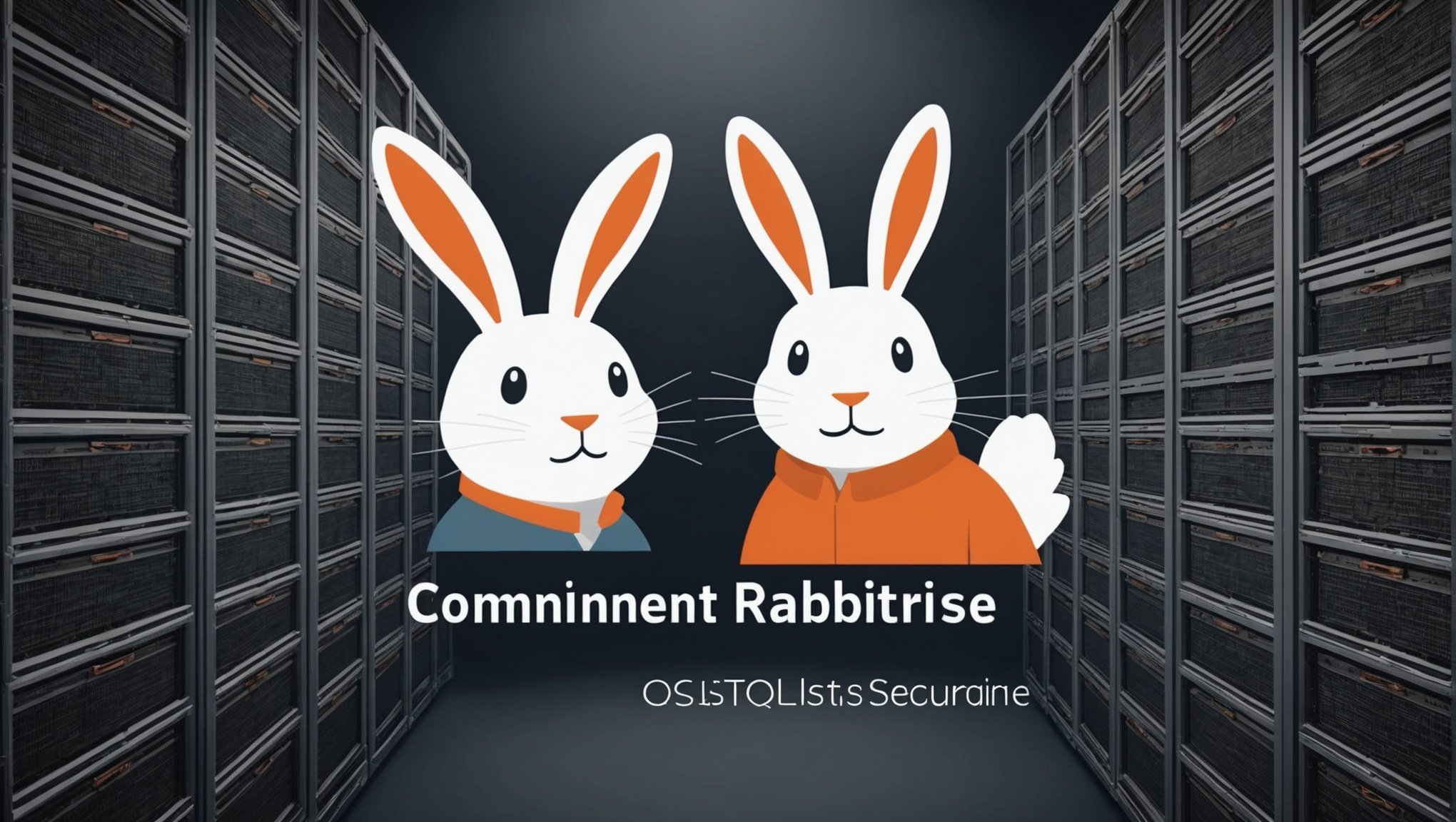In today’s interconnected world, data security is paramount. As businesses increasingly rely on messaging systems for real-time communication and data exchange, ensuring the security of these systems is critical. RabbitMQ, a powerful message broker, is often at the heart of these infrastructures. To safeguard your RabbitMQ cluster, one of the most effective measures is to configure it using SSL/TLS. This article will guide you through the steps to set up a secure RabbitMQ cluster with SSL/TLS, providing a robust shield for your data.
Understanding RabbitMQ and Its Importance
RabbitMQ is an open-source message broker that facilitates communication between distributed systems. It is widely used in various industries for its reliability, flexibility, and support for multiple messaging protocols. However, like any other communication system, RabbitMQ is susceptible to security threats, making it imperative to secure the communication channels.
Topic to read : How do you set up a scalable environment for WordPress using AWS ECS?
Securing your RabbitMQ cluster using SSL/TLS ensures data integrity and confidentiality. SSL (Secure Sockets Layer) and TLS (Transport Layer Security) are cryptographic protocols designed to provide secure communication over a computer network. By encrypting the data transmitted between your RabbitMQ nodes, SSL/TLS prevents unauthorized access and tampering.
Why SSL/TLS Is Crucial for RabbitMQ
In the realm of RabbitMQ, SSL/TLS plays a vital role in enhancing security. When you configure RabbitMQ with SSL/TLS, you achieve:
Also to discover : How can you use AWS Step Functions to orchestrate microservices?
- Encrypted Communication: Ensures that data transmitted between nodes and clients is encrypted, protecting it from eavesdroppers.
- Data Integrity: Provides assurance that the data has not been altered during transit.
- Authentication: Verifies the identities of the communicating parties, ensuring that data is exchanged with trusted entities.
Implementing SSL/TLS in RabbitMQ minimizes the risk of data breaches and unauthorized access, making it a crucial step in securing your messaging infrastructure.
Preparing for SSL/TLS Configuration
Before diving into the configuration process, it’s essential to gather the necessary prerequisites. Proper preparation ensures a smooth and hassle-free setup.
Prerequisites for SSL/TLS Configuration
To configure RabbitMQ with SSL/TLS, you will need:
-
RabbitMQ and Erlang: Ensure that RabbitMQ and Erlang are properly installed on your system. The versions should be compatible to avoid any issues during the configuration.
-
Certificates: SSL/TLS relies on certificates to establish secure connections. You will need:
- A CA (Certificate Authority) certificate: This is used to verify the authenticity of other certificates.
- A server certificate: Issued to the RabbitMQ server, proving its identity to clients.
- A private key: Corresponding to the server certificate, used for encryption and decryption.
-
Configuration Files: Familiarize yourself with RabbitMQ’s configuration files, primarily
rabbitmq.confandadvanced.config. These files will be modified to enable SSL/TLS. -
OpenSSL: A toolkit for the SSL/TLS protocol. It will be used to generate and manage certificates if you don’t already have them.
Having these prerequisites in place will streamline the configuration process, allowing you to focus on the core setup.
Step-by-Step Configuration of SSL/TLS in RabbitMQ
Configuring SSL/TLS in RabbitMQ involves several steps, each crucial for ensuring a secure setup. Follow this detailed guide to configure your RabbitMQ cluster with SSL/TLS.
Generating Certificates
If you don’t have the necessary certificates, you can generate them using OpenSSL. Here’s how:
-
Generate a private key:
openssl genpkey -algorithm RSA -out private_key.pem -aes256 -
Create a Certificate Signing Request (CSR):
openssl req -new -key private_key.pem -out csr.pem -
Generate a self-signed certificate:
openssl x509 -req -days 365 -in csr.pem -signkey private_key.pem -out server_cert.pem
Ensure you securely store these files, as they are essential for SSL/TLS configuration.
Configuring RabbitMQ for SSL/TLS
-
Edit the
rabbitmq.conffile: Add the following lines to enable SSL/TLS.listeners.ssl.default = 5671 ssl_options.cacertfile = /path/to/ca_certificate.pem ssl_options.certfile = /path/to/server_cert.pem ssl_options.keyfile = /path/to/private_key.pem ssl_options.verify = verify_peer ssl_options.fail_if_no_peer_cert = trueEnsure the paths to your certificate files are correct.
-
Edit the
advanced.configfile: If you need more granular control, you can specify additional SSL/TLS options here.[ {rabbit, [ {ssl_listeners, [5671]}, {ssl_options, [{cacertfile,"/path/to/ca_certificate.pem"}, {certfile,"/path/to/server_cert.pem"}, {keyfile,"/path/to/private_key.pem"}, {verify,verify_peer}, {fail_if_no_peer_cert,true}]} ]} ]. -
Restart RabbitMQ: After making the necessary changes, restart RabbitMQ to apply the new configuration.
sudo systemctl restart rabbitmq-server
Verifying SSL/TLS Configuration
Once RabbitMQ is configured, it’s crucial to verify that SSL/TLS is working correctly.
-
Check Logs: RabbitMQ logs (found in
/var/log/rabbitmq/) can provide insights into whether SSL/TLS has been correctly set up. -
Test Connection: Use tools like
openssl s_clientto test the SSL/TLS connection.openssl s_client -connect localhost:5671 -CAfile /path/to/ca_certificate.pem -
RabbitMQ Management Interface: The RabbitMQ management interface can also indicate if clients are connecting via SSL/TLS.
By following these steps, you ensure that your RabbitMQ cluster is securely configured with SSL/TLS, protecting your data from potential threats.
Best Practices for Maintaining a Secure RabbitMQ Cluster
Ensuring your RabbitMQ cluster remains secure involves more than just the initial configuration. Adopting best practices for ongoing maintenance and monitoring is essential.
Regularly Update Software
Keeping RabbitMQ, Erlang, and OpenSSL updated is crucial. Software updates often include patches for security vulnerabilities that could be exploited if left unaddressed. Regularly check for and apply updates to maintain a secure environment.
Monitor and Audit Logs
Regularly monitoring RabbitMQ logs helps detect any unusual activity or potential security breaches. Implementing a logging and alerting system can provide real-time notifications of suspicious events, allowing for swift action.
Implement Access Controls
Limiting access to RabbitMQ nodes and the management interface is vital. Use strong authentication mechanisms and restrict access to trusted users and systems only. Role-based access control (RBAC) can further enhance security by ensuring users have the minimum necessary permissions.
Regularly Renew Certificates
Certificates have an expiration date. Ensure you have a process in place to renew them before they expire to avoid disruptions. Automating certificate renewal using tools like certbot can simplify this task.
Configuring a secure RabbitMQ cluster using SSL/TLS is a comprehensive process that significantly enhances the security of your messaging infrastructure. By encrypting data, ensuring data integrity, and authenticating communicating parties, SSL/TLS provides a robust defense against potential threats.
Starting with understanding RabbitMQ and the importance of SSL/TLS, gathering the necessary prerequisites, and following a step-by-step configuration guide, you can achieve a secure setup. Adopting best practices for ongoing maintenance ensures your RabbitMQ cluster remains secure over time.
In conclusion, by implementing SSL/TLS, you not only protect your data but also instill confidence in your messaging infrastructure, making it resilient against the ever-evolving landscape of cybersecurity threats.











